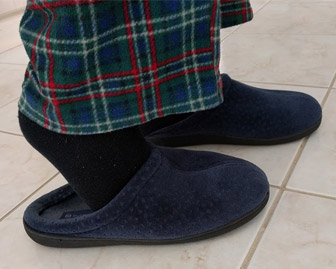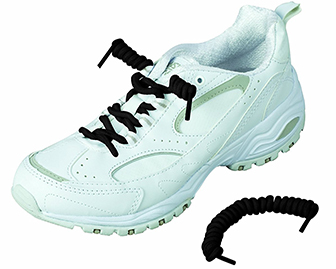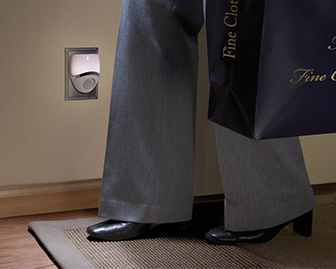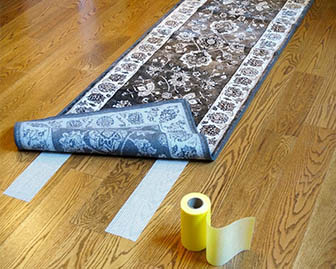It is well known that falls are dangerous and could even be fatal to the elderly. While this knowledge is well known, action to prevent falls is usually lacking. Seniors are especially prone to injuries from falls related to age related declines in their balance and strength. On top of this, it certainly does help when they place themselves at risk.
This article will discuss the three most common mistakes made by seniors that contribute to most of their falls, as well as some strategies to minimize fall risks.
Inappropriate footwear can lead to falls

The elderly have a fond appreciation of slippers because they are warm, comfortable, easy to put on and take off. That said the ease of taking slippers off means that they are not secure onto one’s feet. For instance, slippers can easily come off one’s feet during normal walking, especially if stepping backwards to a nearby seat from a walker. If the slipper comes off, even partially, it can be a tripping hazard and may contribute to a fall.
Generally most seniors have never had a fall as a result of slippers, but it is important to remember that sometimes it only takes one fall to result in permanent disability or death. With age related disease such as osteoporosis which leads to fragile bones, any fall can be potentially dangerous. The most common factor in seniors with hip fractures is a fall, and while advances have been made in hip replacements, this option may not be available to all older adults. As a result, it is best to minimize risk of falling associated with improper footwear. One great alternative is the use of indoor sneakers. These shoes can be well secured onto one’s foot with laces or velcro and dramatically decreases tripping hazards and fall risk. While these shoes may be more difficult to don and doff compared to a slipper, the benefits of them are significant. In short, they cannot come off by accident when using the stairs or during walking.
Often times seniors complain of difficulty bending over to put their shoes on and are resistant to using them as a result. Thankfully, this has been considered and numerous assistive devices for dressing have been invented that are quite effective. For instance, a long handled shoe horn is great for minimizing the need to bend over to place one’s foot inside a shoe. This is a common tool used by hip replacement patients as they are required to follow hip precautions after most surgical procedures in that region. One other complaint that sometimes interferes with use of sneakers is that seniors have difficulty with fine motor tasks which includes tying the shoelaces. This can be fixed easily with elastic laces that simply tighten on their own and secure the shoe onto the foot. While this may make it more difficult to place the foot inside as the laces are stretched open, most seniors do not find this to be a barrier to putting on their shoes. Once the shoes are on, no tying is required. Usually any excess elastic laces beyond 2-3 inches are cut off to prevent them from catching on objects while passing by.

Moreover, footwear is especially important for those that suffer from diabetes. Particularly when the diabetes is advanced, one may experience peripheral neuropathy and have decreased sensation in their feet and lower extremities. When this occurs, one would not normally feel stepping on something sharp like broken glass. As a result, use of shoes is an important piece of injury prevention that needs to be adopted. Another benefit of using shoes is for their increased grip against the floor as most are constructed with rubber soles. In contrast, people that wear socks only are prone to slipping and sliding, especially when on smooth surfaces like hardwood, tile, and laminate.
Poor lighting conditions contribute to many falls
Poor visual conditions at night due to the sun going down have contributed to many falls. Combine this with the fact that many seniors have some visual impairments and you have a recipe for disaster. With age, our eyesight starts to deteriorate and we lose that ability to see minute details in our environment. Where this becomes a concern is when one loses the ability to contrast between flooring and where a step begins and ends when navigating stairs. Thousands of falls are caused each year by seniors attempting to ambulate at night to the bathroom or even up the stairs without the appropriate lighting conditions. With no lights on, it is increasingly difficult to see the path ahead and you may trip over an obstacle or even misstep while using the stairs. Some seniors are aware of this, but choose not to turn the room’s lights on because that would effectively wake them up and they may have a difficult time falling back asleep. Whatever the case may be, it is important to note that they are placing themselves at high risk of falls.
Believe it or not, some seniors carry a flashlight when they walk around their homes at night. This is a huge mistake because if they were to trip and start to fall, not everyone would instinctively let go of the light and open their palms in an attempt to brace their fall. While seniors think using a flashlight increases their safety by improving their vision of their surroundings, it actually places them at risk. Ideally, you want your hands to be free from holding any object so you can protect yourself if you feel you are falling.

Alternatively, it is best to obtain a motion activated night light. These offer several advantages, but the most obvious one being that one does not need to worry about remembering to turn the light on or scrambling to find the light switch in a dark room. Some models are battery powered and can be placed anywhere such as stairs (a spot that is usually neglected in terms of lighting), whereas others need to have an accessible electrical socket. Night lights are most often found in highly used pathways and rooms, which can include the bathrooms, bedrooms, hallways and many other spots.
Slipping and tripping on loose rugs cause many injuries
Lastly, that dreaded rug, which is a staple in almost every home, is a ticking time bomb. Probably because that rug has been there forever, seniors do not see it as a risk. But if you put your foot on it and it easily slides, it is for sure a cause for concern. One can easily lose their balance as the rug moves from underneath them and one could end up on the floor unexpectedly. The rug should be relocated to a less frequented pathway, but the better option is for it to be removed completely. Many family members have attempted to do this for their aging parents only to find that the rug magically reappears in its original spot a few days later. The elderly sometimes find change to be difficult, so some family members have to compromise and keep the rug. In these cases, it is usually a good idea to apply some rug grippers to hold the rug in one certain location by increasing the grip it has against the floor. While this may work in certain situations, it is not appropriate for rugs that have frills or fringes as these may still pose a tripping hazard. For example, when one uses a mobility device like a rollator walker, the wheels can catch one of the edges and lead to tripping. If rugs are an absolute must in the home, they need to be low pile. These are the best as they have minimal height difference between the floor and the rug itself, thus minimizing the risk of the edge being a trip hazard.

Rugs are the bane of most occupational therapists and physiotherapists that focus on community home safety. But we all make choices that sometimes are not good for us. Whether it’s eating that extra cookie, smoking cigarettes or having a deadly booby trap of a loose rug in your hallway. Sometimes it takes a fall to learn that hard lesson, but hopefully we’ve changed a few minds before that occurs. If you do not believe us, it is best to attend any falls prevention class and you will not be in short supply of seniors explaining how they fell or tripped because of their precious rug.
